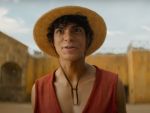On March 1st, the Japanese manga artist Akira Toriyama passed away. The father of the popular series Dragon Ball was 68. Once an official statement was released by his studio, last Friday (March 8), the world mourned Toriyama’s death and Latin America was no different. Homages spread across the region: an impromptu fan meet-up in Buenos Aires, a broadcasting marathon in Mexico, and even Brazil’s vice-president tweeted about the loss. Latin America felt his passing deeply.
In Latin America and throughout the diaspora, Dragon Ball is more than just “popular.” It has become essential to 90s and 2000s kids’ daily lives, a staple of street culture painted in cracking walls or echoing on households’ TVs after school, a bond that Son Goku and his gang weaved in the complex and yet palpable Latin identity.
First released as a manga in 1984 and as an anime in 1986, Dragon Ball is loosely based on the Chinese novel “Journey to the West,” a classic 16th-century recit of a Buddhist hero on a long quest after sacred scripts. Goku, Dragon Ball‘s main character, reenacts the heroism of the Chinese classic, but it’s Toriyama’s twists that bring magic to the myth. Throughout his journey, Goku meets heroes and villains. But none of this is everlasting. Virtue did not mean immaculate kindness and redemption is key. First introduced as reckless, egomaniac enemies, Piccolo and Vegeta become the second line in the world’s defense against super-powered aliens and spirits.
Even when the sign of evil was unstoppable, with Cell and Majin Boo posing an insurmountable threat to the human race, there was room for nuance. The childish gibberish, the practical jokes, and the physical comedy—a limitless element of animation—were never a crutch to relieve and lead the viewer; they were a vivid element that brought characters to life—something like Chespirito’s El Chapulín Colorado.

With Goku leading the way, the Dragon Ball team is all about hard work and keeping family and friends close, especially when times are tough. When things go well, don’t forget to enjoy. This narrative might not have kicked in amongst the millennial Latin kids if the political and media climate had been different in the 1990s when widespread economic crises worked in favor of the anime industry. Thus, anime rose as a fine low-cost solution for TV channels eager to captivate a growing audience.
After a failed attempt in 1993 due to a poor adaptation, Mexico became the first country to broadcast the first saga of Dragon Ball with 60 episodes. The version aired by Televisa was dubbed by the Californian-Japanese agency Cloverway and subsequently used throughout most of the continent. Brazil had the second adaptation, by Alamo, that became famous in the country.
In the following years, Dragon Ball branched out with new sagas, films, and manga. The series’ steady and extended pace echoed the telenovelas’ long arcs: day after day, a new detail was unveiled. Frieza could evolve his form at any time, the Androids posed a new threat, and the Shenglong would soon appear and fulfill one wish. As fans grew older, these characters gradually entered the collective imagery of their circles, in colleges, workplaces, and whole countries.

This is why Latin American people cherish and praise Dragon Ball characters’ perseverance, hope, and cheek-in-tongue stance. And seeing them on a street parade in Colombia, fancying football jerseys in Argentina, or dancing recklessly in Brazil is really what reassures me that Toriyama’s main oeuvre impact will last in Mexico, Brazil, Colombia, and all over Latin America. After all, Goku and his friends belong to Latin America.




